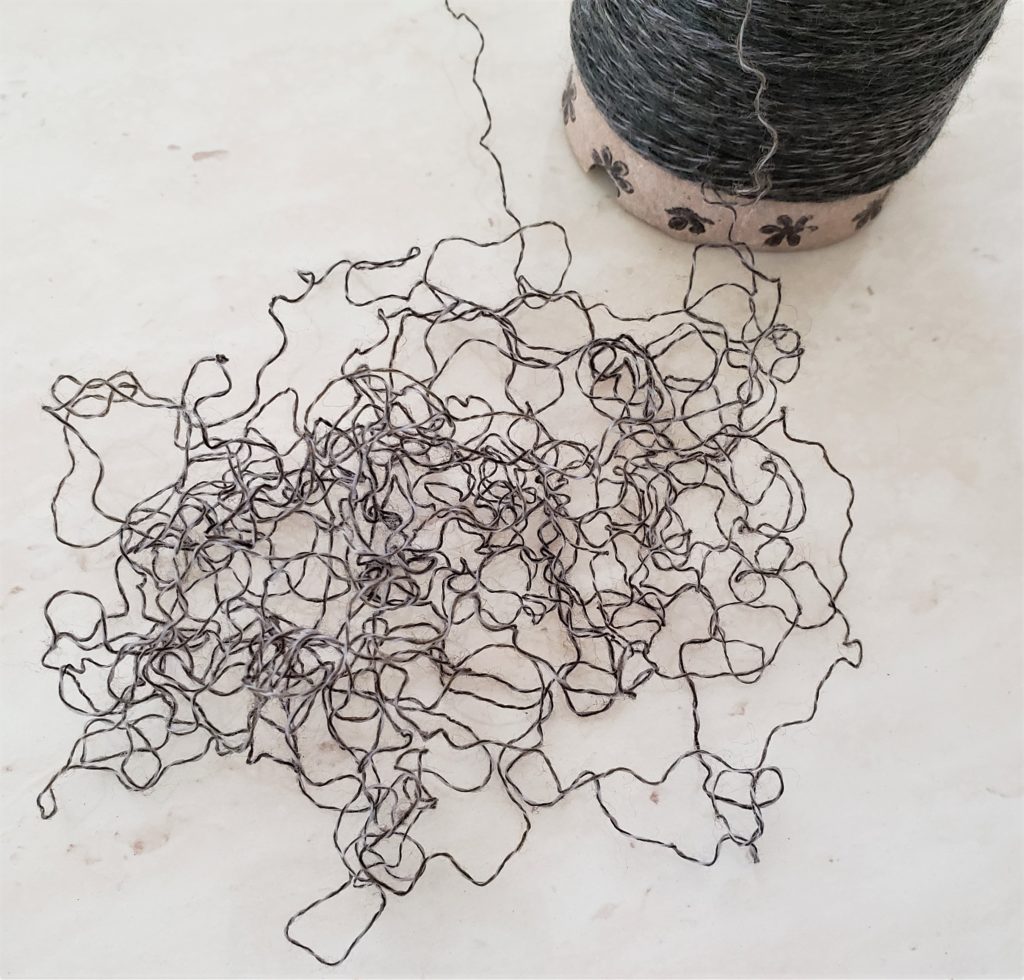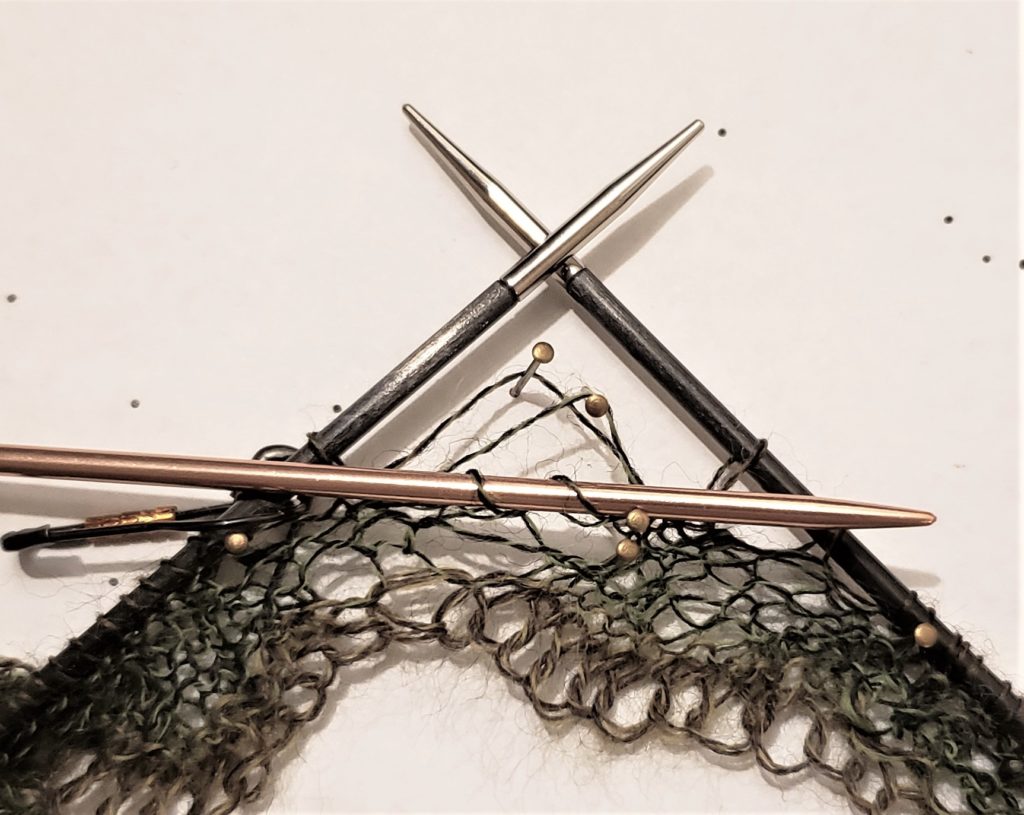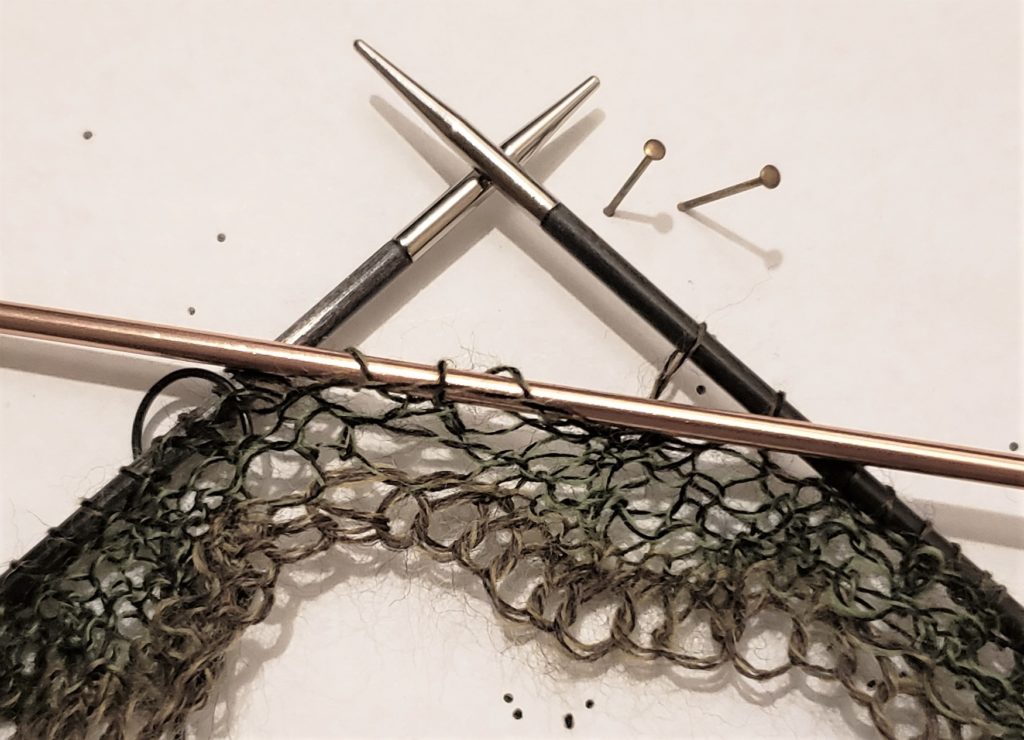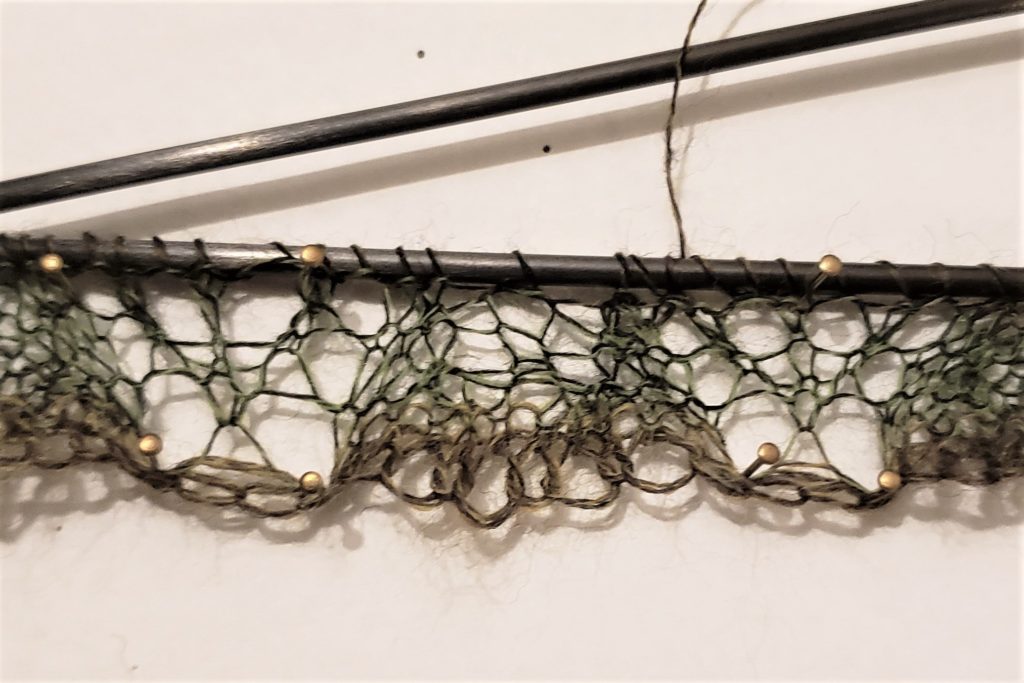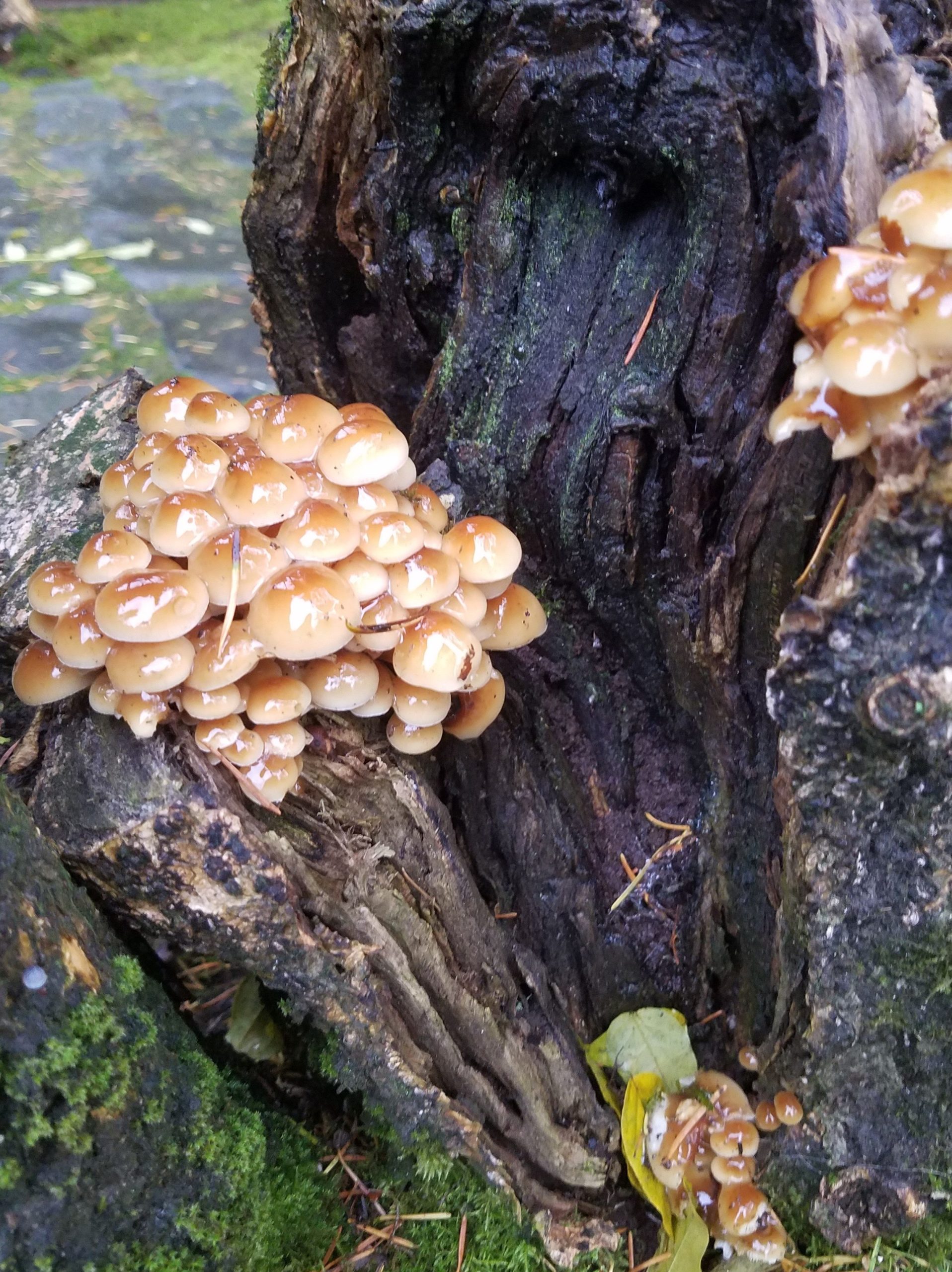
It is mushroom season in the Pacific Northwest, and I’m sad I’m not foraging in Oregon right now. Prior to our marriage, my husband and I moved to Portland for five months spanning the fall and winter, and I definitely miss our first few adventures in the forest there. I don’t miss the incessant darkness and rain, but I do miss the wildly vibrant moss carpeting the forest and the happy clusters of mushrooms everywhere.
I’ve always been fascinated by mushrooms, and I discovered a few years earlier that many species can be used to create natural dyes. Even when lightfast blues and greens are hard to come by from plant materials, mushrooms can produce the entire rainbow of color if you can locate the right species in the right quantity. Some take a bit of finesse to show their true colors – the right pH, the right temperature, the right weight to fiber ratio. Some don’t produce colors without a fermentation in ammonia first (and there is a whole community of people who prefer homegrown ammonia, i.e. stale pee, but I prefer to buy mine over the counter).


The first step in dyeing with mushrooms and lichen is identification, and for that you need great notes, great resources, and some healthy caution. When we lived in Portland, I joined the Oregon Mycological Society and went on mushroom foraging and identification excursions with experts. I feel much more comfortable gaining a second opinion before working with anything, and it’s a necessity if I’ll be foraging for food. Many dye mushrooms are toxic – and some mushrooms are very deadly – so it is important to know what you’re working with. For example, the Cortinarius sanguineus, which I came across many times in the forests outside of Portland, produces a beautiful spectrum of orange to red dyes. It is also toxic (don’t eat your dye mushrooms). Conversely, many species of the Amanita genus are deadly, and they also don’t produce dye, so it’s best to avoid them altogether.
In Puerto Rico, however, my resources for a second opinion are limited. Hell, my resources for basic identification aren’t great either. There are dozens of wonderful field guides to mushrooms in the PNW, but I’ve yet to find one good resource for Puerto Rico. My best option has been the Hongos de Puerto Rico Facebook group wherein 90% of members are trying to forage for hallucinogenic shrooms and one man is solely responsible for helping to identify submissions based on pictures alone. Needless to say, it’s best to exercise caution under such circumstances.
I’m not a cautious person, necessarily, but I am an anxious one. I often do stupid things and then worry myself sick in anticipation of the consequences. While it is true that deadly mushrooms cannot hurt you by touch alone – they must be consumed and metabolized to do their damage – what if the dust of a dried mushroom goes up your nose? Well, after two days of feeling sick to my stomach post inhalation of some stored, bug-eaten mushroom and Googling every iteration of “toxic mushroom dust” imaginable, I’m pretty sure I will live to dye again. Though, one can never tell with these things. Sometimes it takes a few weeks for the toxins to settle in.

If there is a lesson I can impart here, it is always, always wear protective gear when handling natural dyes and mordants, including a good particle mask. Always work in a well-ventilated area, preferably outdoors. Always rinse your fiber completely and dispose of the dyebath properly and away from pets. Many dyes and mordants are toxic, so follow the same general precautions as you would with any other natural dye. Also, identify your foraged materials to the best of your ability prior to storing, and label/document well.
Part of the process of identification is knowing what the mushroom was growing on or near. Sometimes, to tell look-alikes apart, it is essential to know where the specimen was found. Proper identification is also essential in reproducing results. You are unlikely to remember any details at all without good notes. I definitely slipped a bit with that in the case of my mushroom powder debacle, which is why I was so scared. I had identified it enough to determine that it was probably harmless and would probably produce dye, but I still don’t know the genus or species. I also did not take good photographs of it, so I could not go back and confirm what notes I did take. In the future, I will be better about this.

Despite the dangers that come from ignorance or misidentification, mushroom foraging and dying can be incredibly satisfying. Some dye mushrooms, like the Phaeolus schweinitzii – commonly called Dyer’s Polypore – can produce a variety of colors from pale to golden yellow to olive green, depending on the mordant used. Such a range from one mushroom encourages experimentation.
Hydnellum peckii, which I’ve only seen in person in the Smokies, looks like a bloody Halloween prop when young but will give you a beautiful blue, though the weight to fiber ratio is high, so you have to find and save up a lot to make good color.

Hydnellum are toothed mushrooms, which interests me because a Mycopigment expert I met in Oregon once told me that any toothed mushroom that I find will likely give dye. She also told me that mushroom dye will only fix to protein fibers because they are more closely related to animals than plants – and I’ve since discovered that this is not true – so I take anything I learned from her with a grain of salt. However, in my own research, I’ve found evidence suggesting that there are no deadly or significantly toxic species of toothed mushroom, so I feel pretty comfortable experimenting with this family despite not being able to accurately identify them. Thank god the mushroom I inadvertently snorted was toothed. As it sits in its solar dye bath in my back yard, it looks to be a rather strong brown dye.

It’s also unlikely that a polypore will kill you, though they can make you quite ill (again, if ingested), so I feel fairly comfortable with collecting those. It’s the gilled mushrooms that you really want to be careful of, but unless you know what you’re looking for, there’s really no sure and fast way to tell. I quite liked this person’s take on poisonous mushrooms. For the gilled ones, I like to do what I can to get a second opinion.
Lichens are also often good dyers, though certain species are also toxic. However, there are definitely some varieties, like Evernia prunastri, that will give a beautiful purple dye if fermented in ammonia properly first. There are tests one can do with an aqueous solution of potassium hydroxide (KOH) to check if the lichen is a purple dyer – and it is best to properly check first, because the process is a time consuming and smelly one to get wrong. KOH will also help in the identification of mushrooms.
I’ve been told that both Phaeolus schweinitzii and Pisolithus tinctorius (dark browns) grow in Puerto Rico where there is pine. I’ve heard rumors of people looking for Trametes versicolor (bluish-greens), but they most often find other Trametes varieties. Personally, I’ve only identified one dye mushroom here with certainty, the Pycnoporus sanguineus, which grows with abandon very near my home. I’m looking forward to the light golden brown I’ve been promised with that one.
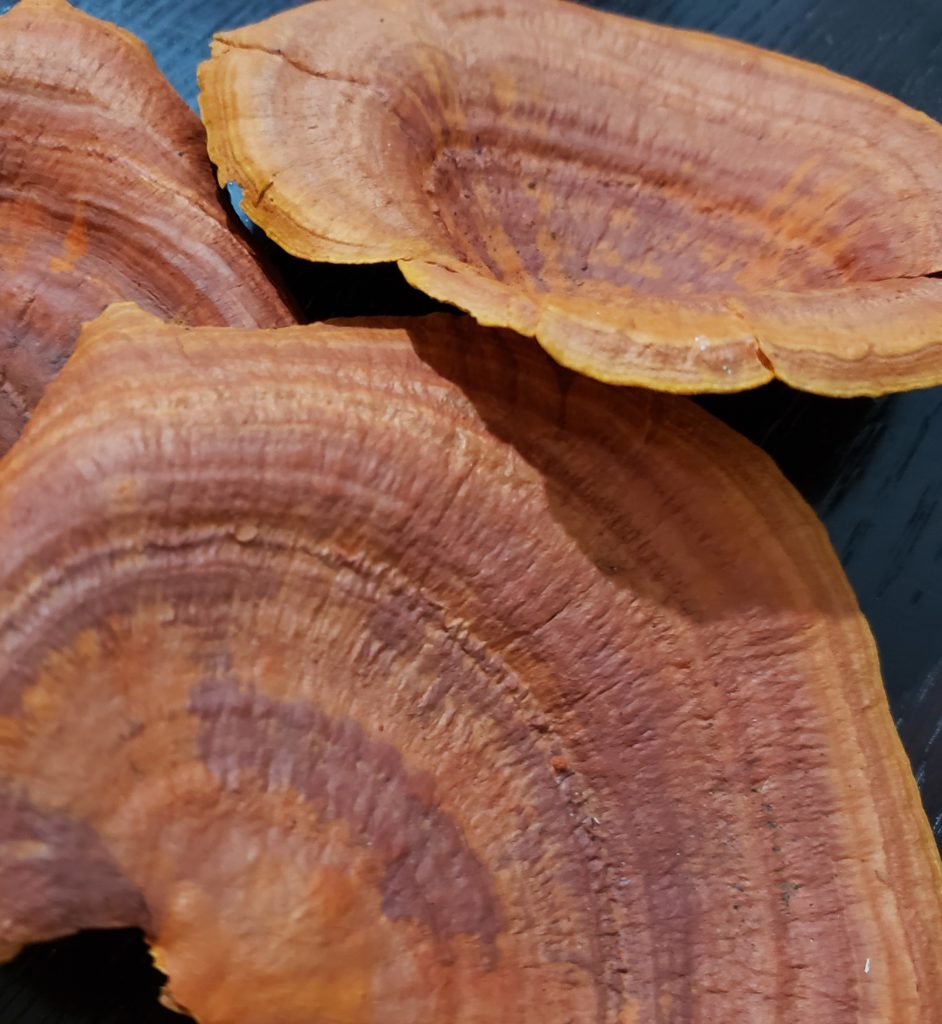

Stay safe, happy experimenting, and don’t go snorting any mystery mushroom dust.
Resources:
The Rainbow Beneath My Feet: A Mushroom Dyer’s Field Guide by Arleen Rainis Bessette and Alan E. Bessette





